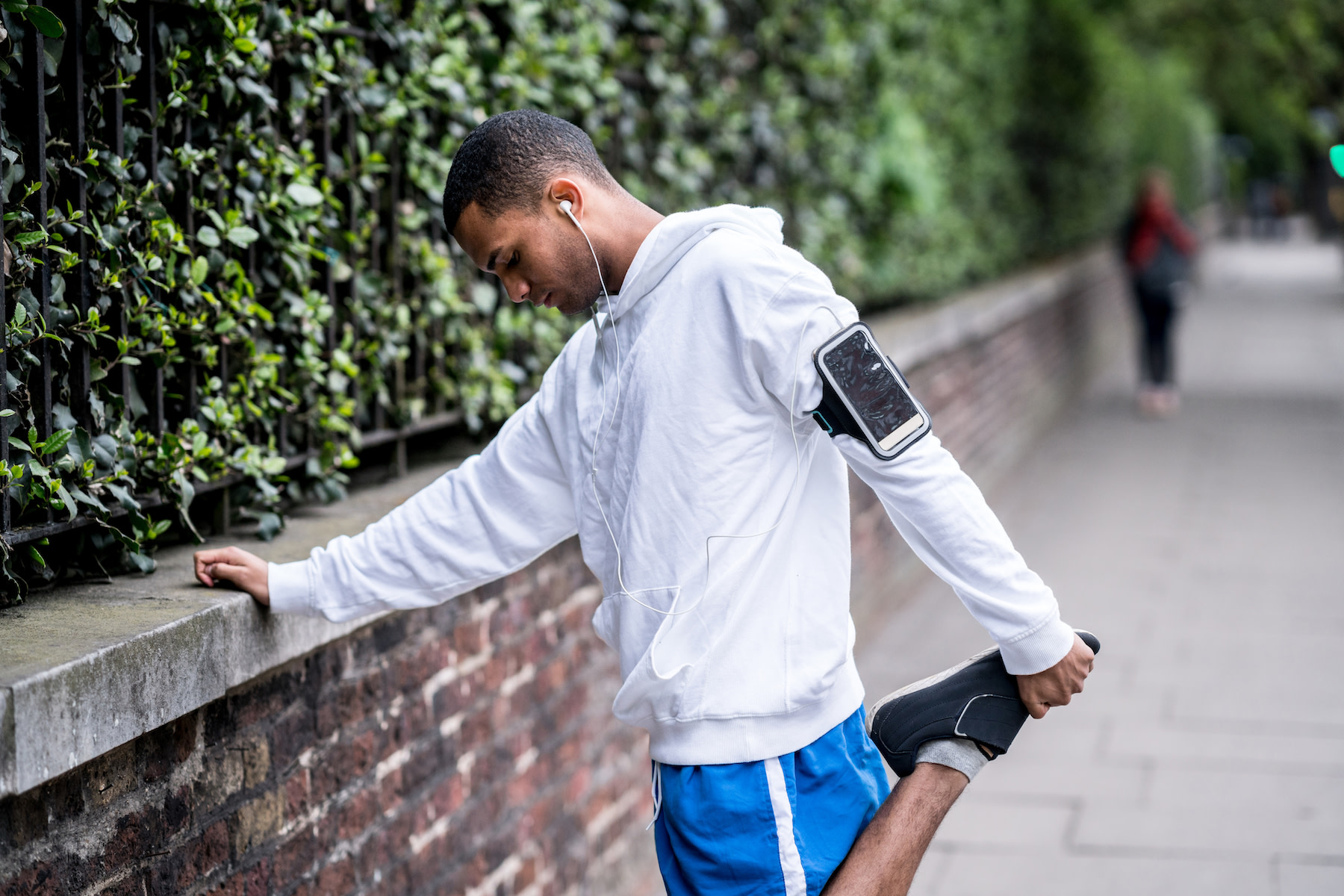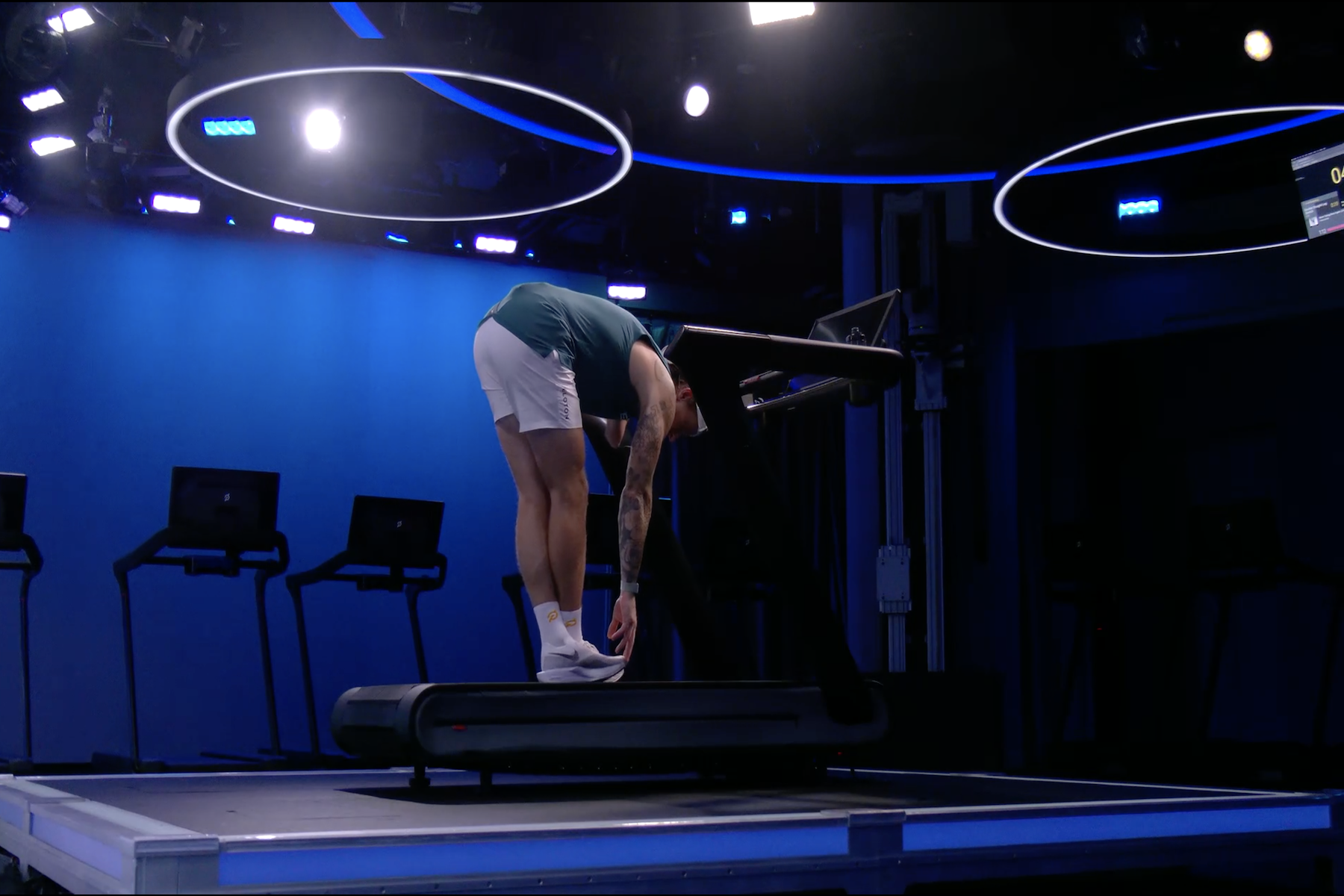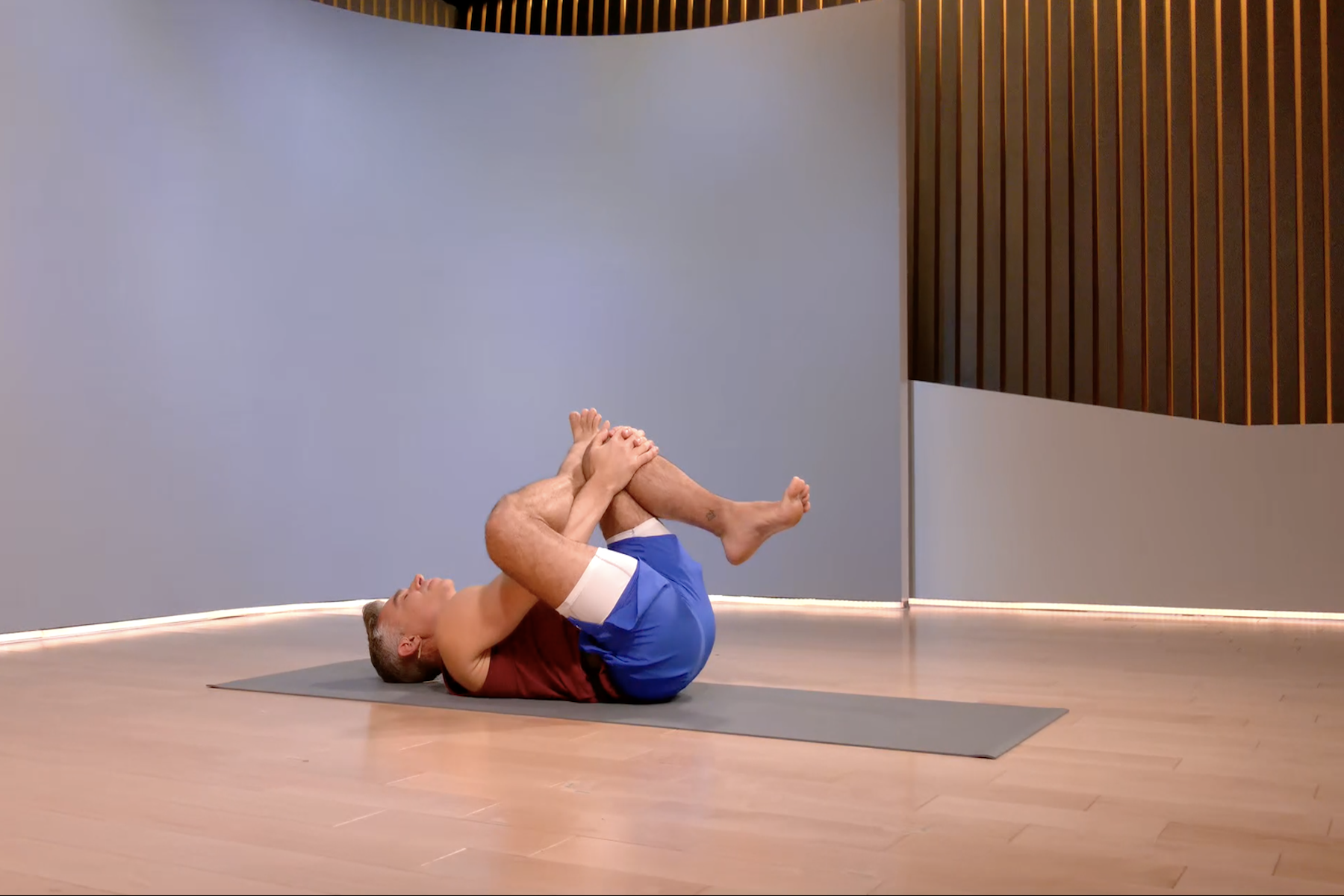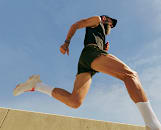
The 5 Best IT Band Stretches for Runners, Cyclists, and Workout Enthusiasts
It's time to give your lower body some relief.
By Alyssa Sybertz•
What Is the IT Band?
What Causes Tight IT Bands?
What Is IT Band Syndrome?
How to Relieve IT Band Tightness
The 5 Best IT Band Stretches
Should You Foam Roll Your IT Band?
How to Prevent IT Band Tightness
When to Seek Medical Advice for IT Band Problems
Regardless of your favorite way to get your sweat on, you likely have a set of go-to stretches you complete before and after your workout. Because whether you’re running, walking, or cycling, keeping your large muscle groups loose is key to avoiding injury. However, if you’ve started to notice feelings of tightness on the outside of your leg or around your knee, you may need to integrate some stretches for your iliotibial (IT) band into your regimen.
Discover more ways to reach your goals with Peloton
What Is the IT Band?
“The IT band, more officially known as the iliotibial tract, is connective tissue or fascia generally running from the hip to the shin bone just past the knee, along the outside or lateral side of the thigh,” says Peloton instructor Ross Rayburn. “Imagine the stripe on the outside of a pair of tuxedo pants.”
The primary role of your IT band is to provide support and stabilization for your knee and the surrounding leg muscles. “The IT band attaches to the lower fibers of the gluteus maximus and tensor fascia latae (TFL) muscles of the hips and anchors at the outer side of the top of the tibia (shinbone),” says Kristen Gasnick, a physical therapist in the outpatient rehabilitation department at Holy Name Medical Center in New Jersey.
Ligaments connect your bones to each other, while tendons link your muscles to your bones. In the case of your leg, your IT band serves as another layer of connective tissue—keeping everything where it’s supposed to be.
What Causes Tight IT Bands?
Your IT bands do a lot. And oftentimes, tight IT bands are a result of overwork or repeated stress. However, there are a few physiological factors that may make you more susceptible to tight IT bands, including having one leg that’s longer than the other, limited hip mobility, and arthritis in your knee.
Why Do Runners and Cyclists Get Tight IT Bands?
Your chances of having tight IT bands also increase if you’re an avid runner or cyclist, due to the repetitive movement involved in these modalities. “Tightness is the most common ailment for IT bands, especially in athletic and active people,” Ross says. “It is usually a result of the body ‘protecting’ itself from injury.” However, that doesn’t mean you should ignore and push through that annoying sensation. If neglected, tight IT bands can lead to IT band syndrome, a more serious condition.
What Is IT Band Syndrome?
“IT band syndrome is a condition that causes pain at the outside of the knee along the lower section of the IT band,” Gasnick says. “It is often seen in runners due to the repetitive nature of running, which causes increased friction at the outer side of the knee.” Muscular imbalances, or weakness in the muscles that attach to the IT band, also play a role. “These can alter the proper alignment and mechanics of the joints of the lower body,” Gasnick adds. “When the glute muscles are not strong enough to stabilize the hips and knees with movement, the IT band becomes more irritated.”
Symptoms of IT Band Syndrome
How do you know if your IT band tightness has progressed to IT band syndrome? Examine your pain levels. “IT band syndrome is typically diagnosed specifically in the presence of pain with movement and physical activity, whereas IT band tightness usually doesn't result in pain,” Gasnick says. If your pain gradually worsens the longer you exercise or when you’re moving downhill, that could also indicate IT band syndrome.
How to Relieve IT Band Tightness
When you wake up with tight hamstrings or sore calves after a long run, do you immediately fear the worst? No, you likely just take a few extra minutes to stretch before your next workout. The same ethos applies to IT band tightness: It’s possible to stop it from progressing to IT band syndrome by stretching the surrounding muscle groups.
And, sometimes, that may mean giving your overworked IT bands a break. “Rest from aggravating activities can help reduce discomfort,” Gasnick says. “Applying ice at the outside of the knee can be helpful as well.”
The 5 Best IT Band Stretches
Because the IT band is not a muscle, you can't (and shouldn't) stretch it. “The best stretches for alleviating IT band tightness stretch the muscles that attach to it: the TFL and glutes,” Gasnick says. Here are five expert-recommended stretches to work into your routine to target the muscles that surround the IT band.

1. Cross-Legged Forward Fold
Stand with your feet together. Cross your right leg behind your left.
Drop your hands toward the floor. Fold your torso over until you feel a stretch along the outside of your right leg.
Hold this position for 15 seconds. Switch sides and repeat.
2. Standing Side Stretch
Stand with your feet together. Cross your right leg behind your left.
Reach your arms over your head. Grab your right wrist with your left hand.
Lift your torso up and lean to your left side, feeling a stretch in your side body.
Hold this position for 15 seconds. Switch sides and repeat.

Daniel de la Hoz/Moment via Getty Images
3. Seated Cross Twist
Sit on the floor with your legs straight out in front of you. Bend your right leg and cross it over your left leg. Plant your right foot flat on the outside of your left knee or thigh, depending on your hip flexibility.
Hug your right knee toward your chest with your left arm. Twist your torso to the right until you feel a stretch in your right glute.
Hold this stretch for 15 seconds. Switch sides and repeat.

Lifemoment/ iStock/Getty Images Plus via Getty Images
4. Standing Quad Stretch
Stand with your feet together. If needed, hold onto a wall or chair with your left hand for balance.
Kick your right foot behind you. Grab your right ankle or foot with your right hand. Pull it in toward your glute.
Extend your right knee toward the floor. Press your hips forward until you feel a stretch in the front of your right hip and quad.
Hold the stretch for 15 seconds. Switch sides and repeat.

5. Supine Figure Four
Lie on your back. Bend your knees and place your feet flat on the floor.
Cross your left ankle over your right thigh. Clasp the back of your right thigh with your hands.
Gently pull your right thigh toward your chest until you feel a stretch on your left side.
Hold the stretch for 15 seconds. Switch sides and repeat.
Should You Foam Roll Your IT Band?
Beyond stretching, it was previously thought that foam rolling may also keep your IT bands loose and injury-free. But, this guidance has changed and now it's best to avoid rolling the IT band and instead focus on stretching the surrounding muscle groups.
How to Prevent IT Band Tightness
Making sure to warm up and cool down adequately before and after working out will help keep your IT bands healthy. It’s also important to rest. Since the repetitive motion of running and cycling can contribute to IT band tightness, giving your body time off from those modalities is critical. Consider working some strength, yoga, or stretching classes into your routine. These exercises will not only give your IT bands some recovery time, but they will also help strengthen the surrounding muscles.
“Strengthening the gluteus medius muscle can help stabilize the hip and help fix muscle imbalances to reduce pain,” Gasnick says. Keeping your leg muscles strong and healthy will allow your IT bands to stay resilient.
When to Seek Medical Advice for IT Band Problems
If your IT band tightness progresses to IT band syndrome, it’s worth making an appointment with a medical provider. “Someone should see a healthcare provider if they continue to have pain at the outside of the knee with movements like walking, running, going up or down stairs, squatting, or lunging,” Gasnick says.
This content is for informational and educational purposes only and does not constitute individualized advice. It is not intended to replace professional medical evaluation, diagnosis, or treatment. Seek the advice of your physician for questions you may have regarding your health or a medical condition. If you are having a medical emergency, call your physician or 911 immediately.





